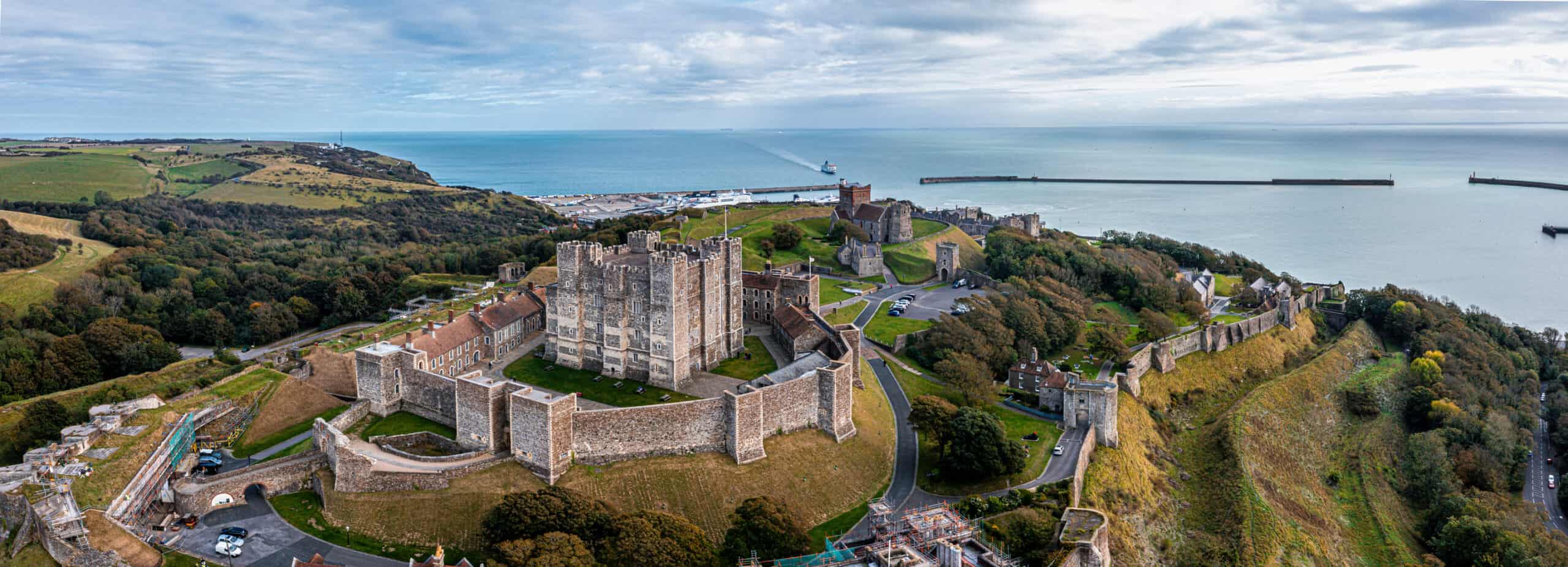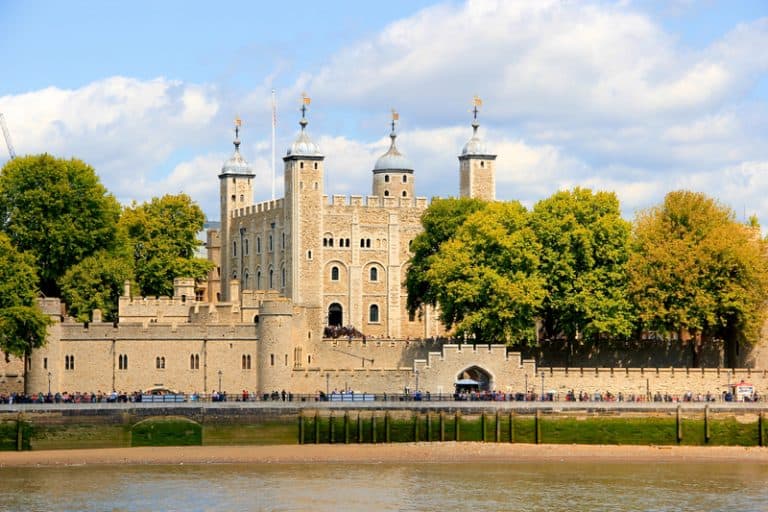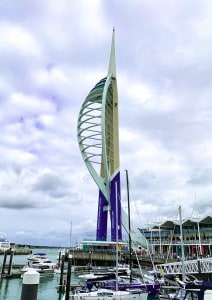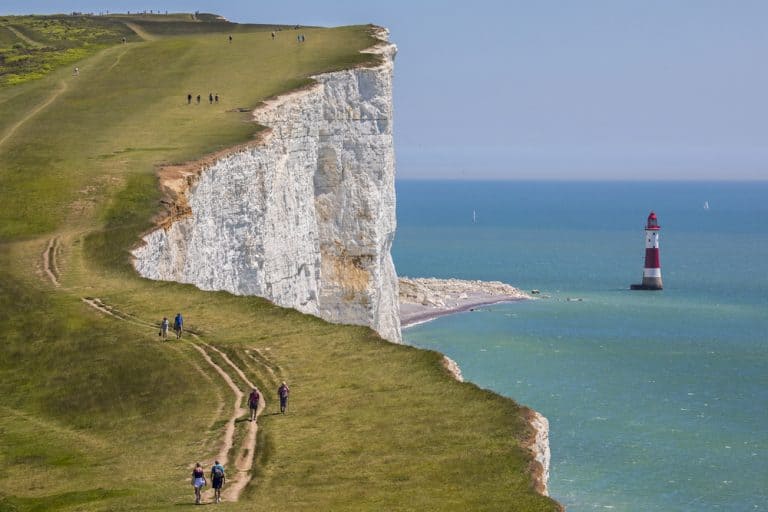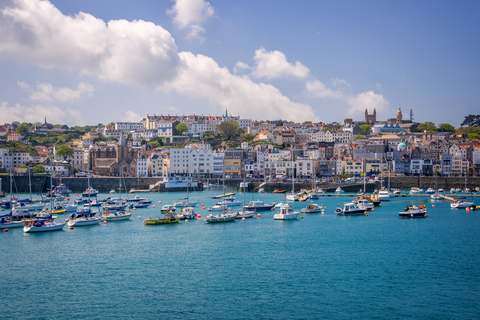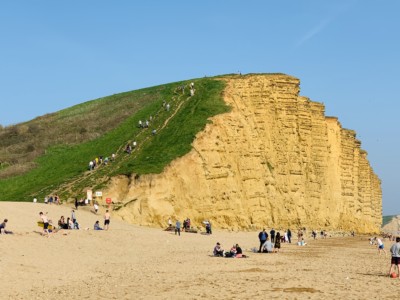What to do on a London to Dover day trip
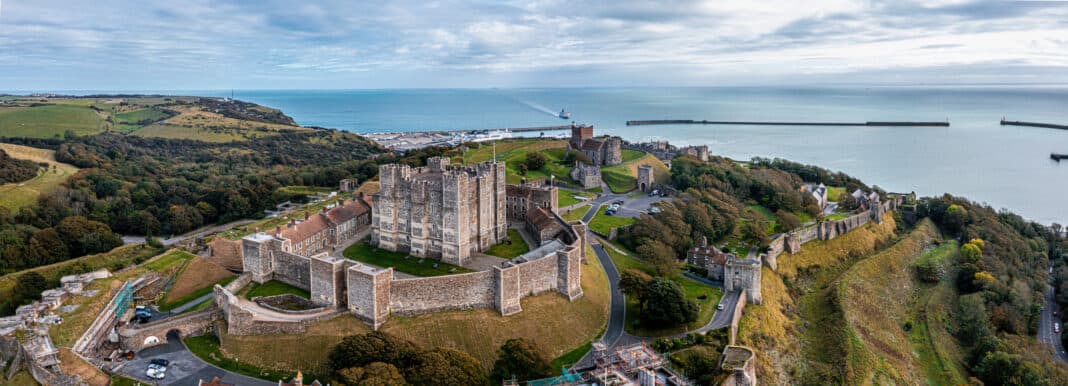
Nestled in the southeast corner of England, Dover has long been an important gateway to the continent. The town’s famous white cliffs have served as a landmark for sailors since ancient times, and today the port of Dover is one of the busiest in the country.
It’s therefore a fascinating day out from the capital: you can explore its history and natural beauty, get away from the hustle and bustle of London, and breathe in some sea air at the same time.
There’s plenty to do on a London to Dover day trip, and at just over an hour by train from the capital, it’s an excellent excursion for those short on time.
My post outlines the top things to see and do on a London to Dover day trip, as well as some practical information to help you plan your time.
This post contains affiliate links
A London to Dover day trip
Where is Dover?
Dover is a port town in south east England, in the county of Kent. It is around 80 miles from London and 20 miles from the French coast (it is the closest point in England to France, so it’s easy to hop across to Europe).
Driving from London takes around an hour and a half. However, I’d suggest taking public transport – specifically the train – if you’re just popping down to Dover for a day.
Travelling by train is a slightly faster way to travel to Dover than by car and will allow you to sit back, look out at London and the River Thames as you leave, and then take in the views of the English countryside.
How to get the train from London to Dover
You can get frequent trains from central London to Dover from London Victoria station, London St. Pancras station, and London Charing Cross.
Journey times vary. However, the trains from St. Pancras tend to be quicker, (around an hour), as they travel on the high-speed Kent line. So, if you have limited time for your day out, this may be the best way to get to Dover.
All trains go into Dover Priory train station, which is about five to ten minutes on foot from the town centre.
Day tours to Dover
You can also book day tours to Dover. These are great if you want to see the main sights of Dover, and other nearby historic places. You’ll also get a tour guide who can give you information on the local area and the history of this part of Kent.
- This guided tour combines a trip to Dover to see the White Cliffs and the castle with a trip to the magnificent Canterbury Cathedral.
- This full-day tour takes you to Dover and Canterbury Cathedral, and includes a tour of Leeds Castle, which is less than 40 miles away.
- And this great tour combines Dover and Canterbury with a chance to see some of the Kent countryside. Kent is billed as the ‘garden of England’ and you’ll see why on a trip like this. You’ll go past fields and orchards and then on to the small rural village of Chilham.
Things to do on a London to Dover day trip
If you’re on a London to Dover day trip, there are some key things that you should definitely see and do. Read on for more information.
Visit Dover Castle

Dover Castle is said to be one of England’s largest castles, its position on top of the cliffs providing an ideal place from which to defend the coastline from invaders.
The beautiful castle dates back to the 11th century, but its current design and creation is associated with the reign of King Henry II in the 12th century. The castle was also used as a fortress during the Napoleonic Wars and played an important role in the two world wars.
Today, Dover Castle is open to the public and offers visitors an opportunity to go inside and learn about its role in British history. It’s also a place where you can get great views of the surrounding area from the top of the castle walls.
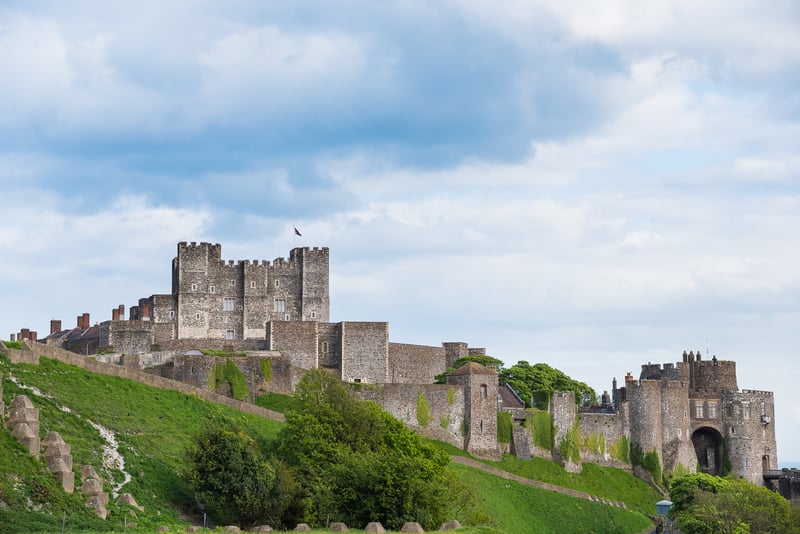
The Great Tower
When you visit, you should go into the Great Tower. This is a large 25 metre high square tower that was built on the orders of King Henry II in the 12th century to symbolise and reinforce the importance of royalty.
It is also thought to have served as a destination for pilgrims travelling from the shrine of Thomas Becket in nearby Canterbury (to discover more things to do in the historic city of Canterbury, see my post on day trips from London by train).
You can go inside the tower and look at the medieval paintings and furniture. You can also climb to the top for stunning views across the area.
The Secret Wartime Tunnels
Also not to be missed are the Secret Wartime Tunnels, military tunnels buried into part of the White Cliffs of Dover. The tunnels were used to store ammunition and shelter troops from enemy bombardment during World War II. They also housed a command centre and hospital.
The tunnels have now been renovated into a museum that recreates some of this period’s sights and sounds.
Other things to see
On a visit to Dover Castle, you can also go into the First World War Fire Command Post and wander around the extensive grounds with its Roman lighthouse, small church, and battlements.
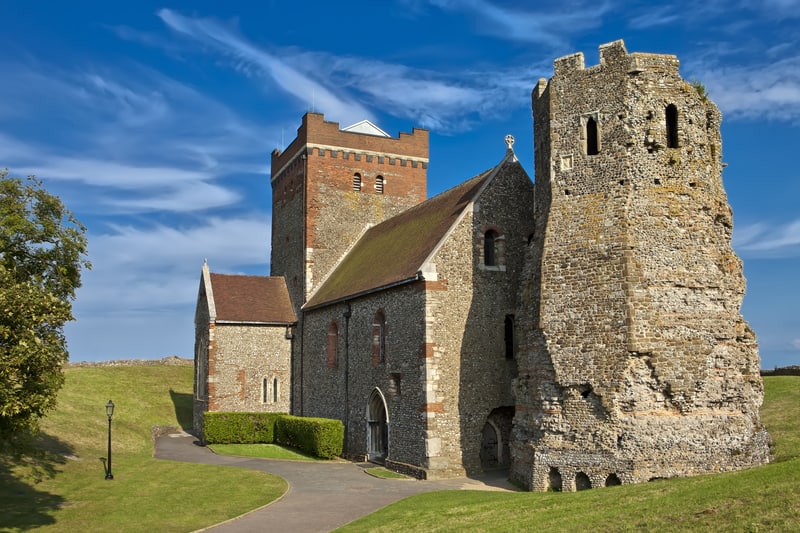
Click here for tickets to Dover Castle.
Alternatively, you can visit for free with an English Heritage Pass.
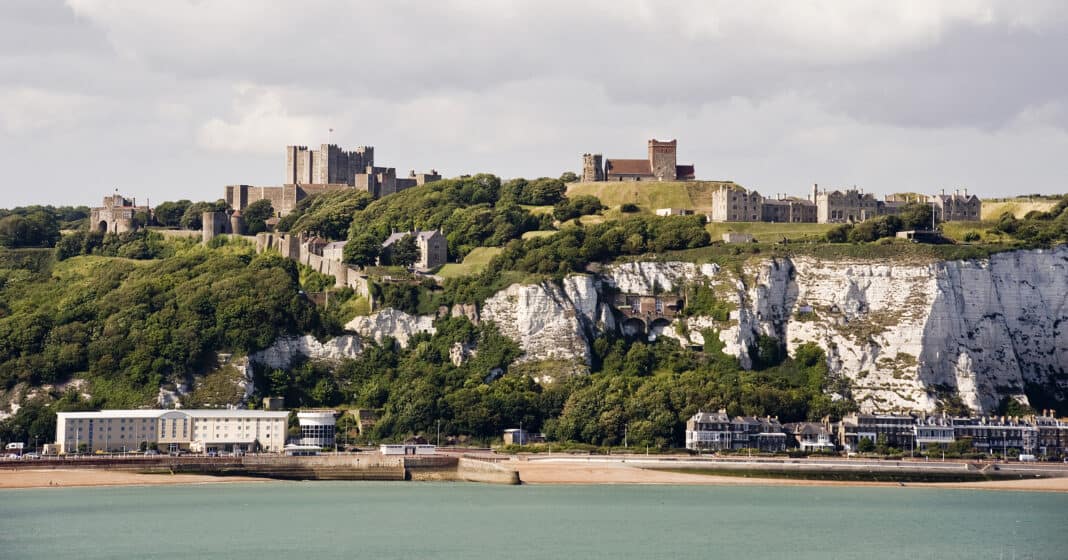
See the famous White Cliffs of Dover
The White Cliffs of Dover are one of the most iconic sights in England and probably the most famous attraction associated with the town. They’re a must-see if you’re a first time visitor to the town.
As the name suggests, they are white chalk cliffs that rise vertically from the waters of the English Channel to a height of around 350 metres. They’re quite a dramatic sight and on a clear day can be seen from miles away.
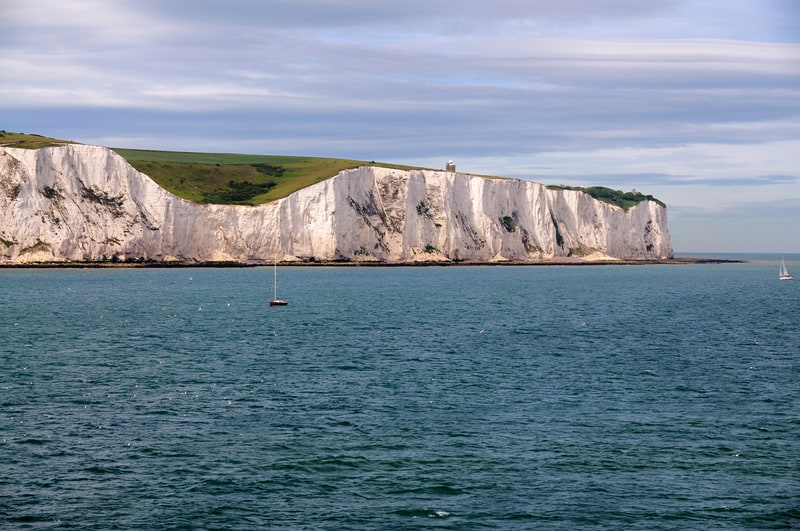
If you’re visiting Dover, make time to walk on the cliffs, which offer breathtaking views of the English Channel and the surrounding countryside.
Walking on the White Cliffs of Dover
The cliffs are a popular spot for a coastal walk and a place where you can truly get a sense of the magnificence of this part of the coastline.
The main section is managed and protected by the National Trust, so there is plenty here that caters to visitors. There’s a visitors’ centre, cafe, toilets (which include accessible toilets and baby changing facilities), and a car park. There is a viewpoint where you can look out over the cliffs.
There are also a number of walking trails of varying lengths that go along the cliffs. All are well maintained and marked out, making them easy to follow. Whether you’re looking for a peaceful stroll or a more strenuous hike, there’s a route for everyone.
This circular route is just over 3.6 miles with an estimated walking time of 1 hour and 40 minutes. Although it may seem like a long walk, it is considered ‘easy’ (although do plan ahead and wear comfortable shoes).
The route begins in the car park. It takes you up to the South Foreland Lighthouse and then back to the starting point.
The South Foreland Lighthouse
Walking up to the South Foreland Lighthouse is definitely worth doing.
The lighthouse is a late 19th-century Victorian structure which was used to help guide ships across the Dover Strait until the late 1980s. It is a pretty white octagonal building that is 21 metres high.
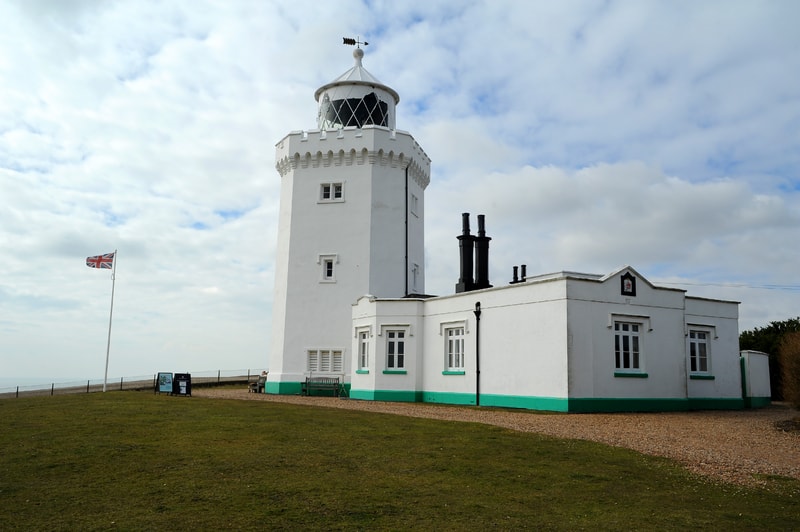
If you do visit, you can climb to the top of the tower, see the inner workings of the lighthouse, and take in the stunning views across the sea. It’s another great place for a photo stop on your day out.
On a blustery day, you can borrow one of the lighthouse’s kites and fly this on the grass outside. Or, if it’s a bit too windy, pop into the tea room for some well-deserved tea and cake after your walk up here.
Fan Bay Deep Shelter
Fan Bay Deep Shelter is a wartime shelter that was dug into the White Cliffs of Dover in the Fan Bay area during World War II. It was used to protect troops from enemy bombardment.
The shelter is about 21 metres below the surface and around 325 square metres in size.
It was abandoned after the war and fell into disrepair. In recent years, however, it’s been restored and is now open to the public. You can visit and explore the tunnels with a guide to learn about life in the shelter during World War II.
If you’re a history lover, you’ll no doubt be interested in visiting Fan Bay Deep Shelter. However, note that the tunnel is a mile and a half from the National Trust Visitor centre on the cliffs (half a mile from the lighthouse) and has steep steps that take you underground. So a visit here might not be suitable if you have mobility issues.
Children under eight are also not permitted to go into the tunnels. There are no facilities (refreshments and toilets) and cash is needed for the entrance fee.
Go to the beach at St. Margaret’s Bay
If you’re looking for a lovely beach to relax on during your Dover day trip, head to St. Margaret’s Bay. The bay is about a 10-minute drive from Dover to the village of St. Margaret’s At Cliffe, from where you can walk down to the beach. You can also catch a bus here which takes slightly longer.
The beach is shingle, not sand, but it’s lovely and another great spot to get some views of the Dover cliffs. Maybe this is why some of the rich and famous – Noel Coward and Ian Fleming to name but two – are known to have frequented the bay.
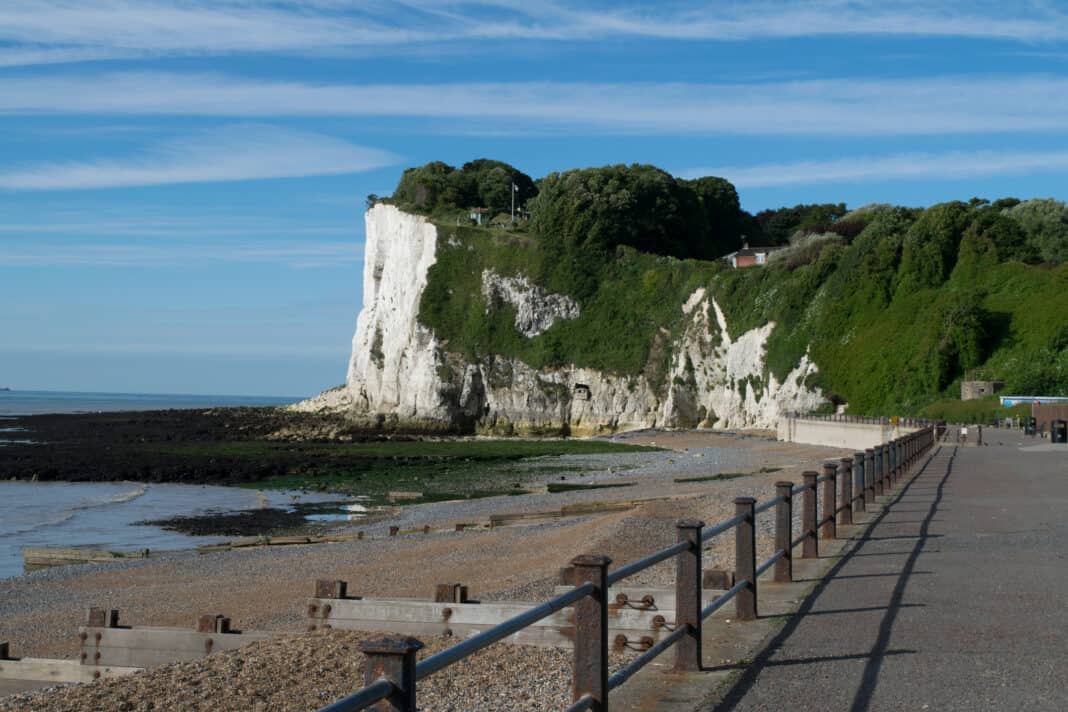
St Margaret’s Bay is a beautiful, secluded area to spend some time in, particularly when the weather is warm in the summer months.
You’ll also find the nearest pub to France: the aptly named ‘The Coastguard’. The pub gets excellent reviews on TripAdvisor so it is worth stopping off if you need a bite to eat and have some free time. It also hosts live music and barbecues in the summer.
The bay itself has facilities if you want to spend a bit of time here: there are toilets and parking, including disabled parking.
Learn about the town’s history in the Dover Museum
Dover Museum is a great place to learn about the history of Dover and the surrounding area. Inside, you can find exhibitions about the town’s past during a number of different eras, including the Stone Age, Roman, Saxon, and medieval times.
The museum proudly boasts of having “the world’s oldest known seagoing boat”, a boat from the Bronze Age estimated to be around 3,500 years old.
For more information on Dover Museum, see the website.
Visit the Dover Transport Museum
Another museum worth visiting if you have time left over is the Dover Transport Museum. This is around a ten-minute drive from the town.
This museum is dedicated to the history of transport in Dover, and it has a wide range of exhibits. It showcases different vehicles from a wide range of eras. You can see fascinating exhibits of vintage cars, buses, and motorcycles, as well as a police panda car, a Romany wagon, and an extensive range of model cars and boats.
If you’re interested in transport, the museum provides lots of fascinating information about Dover’s role in the development of transportation.
A London to Dover day trip
If you’re looking for a great day out from London, I’d definitely put Dover on your list. There’s plenty to keep you occupied for just a few hours, and at only just over an hour from the capital, it’s an easy place to reach quickly.
Whether it’s about learning more about English history, walking along the iconic white cliffs and visiting the local historic sites, or just getting some fresh sea air, it’s well worth making the effort to visit.
Other ideas for things to do in London and UK short breaks
Dover is one idea for a day trip from London. But there are plenty of other places to choose from for a full day out in the south east of the UK. You may therefore be interested in some of my other posts:
- Days out in East Sussex
- Things to do near Tower Bridge
- A visit to Kensington Palace
- Things to do in Richmond Park
- A day trip to Brighton from London
- Day trips from London by train
- A visit to Windsor
- Top tips for visiting the Tower of London
- Things to do in Battersea Park
- Days out in Hampshire
- The Portsmouth Historic Dockyard
I also have a range of other posts on short breaks in Europe on my website – click here for more information.

